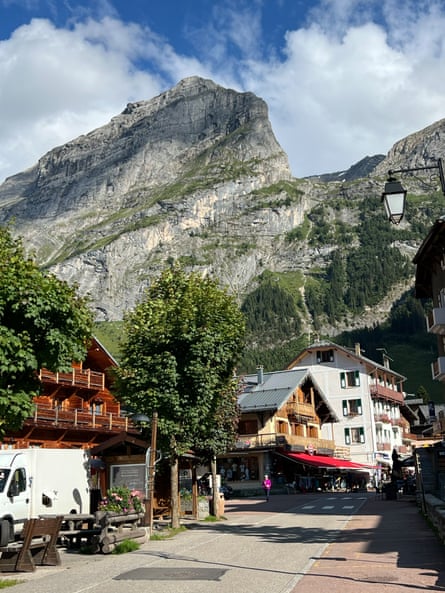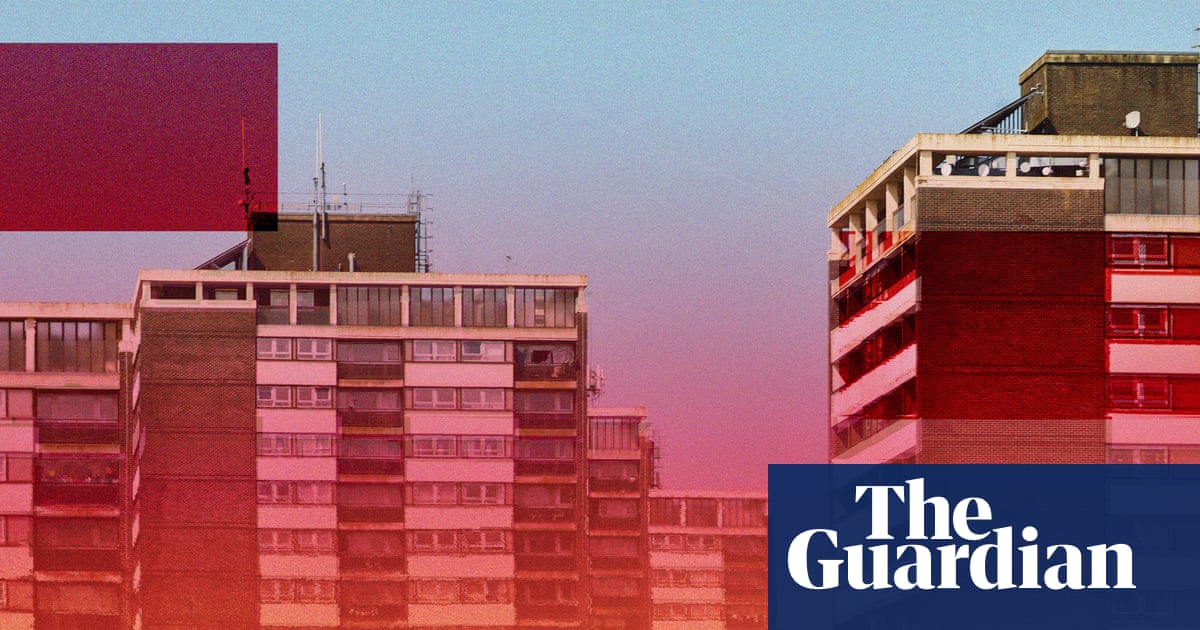PROTECT YOUR DNA WITH QUANTUM TECHNOLOGY
Orgo-Life the new way to the future Advertising by AdpathwayThe villagers of Pralognan-la-Vanoise in the French Alps know well the perils posed by the mountains that encircle them.
Avalanches, rockfalls, mudslides, sudden crevices and torrents of water are within the living memory of most villagers, and every day the climate emergency throws up new dangers.
Less than a year ago, an enormous lake formed by a melting glacier was discovered high above Pralognan that experts feared could inundate the village with more than 13,000 gallons of icy water.
Bernard Vion, a 66-year-old Alpine guide who has watched the expanse of water grow and the mountain change over his lifetime, said the region was on the frontline of the climate crisis but laughed when asked if he was worried. “I live just underneath the rocks and I sleep easy in my bed now as I did before,” he said. “People who live in the mountains have a resilience to natural dangers.”
As used to natural hazards as local people are high up in the Alps, they are not, however, an idle threat. The Swiss village of Blatten was wiped out by a rock and ice avalanche in May and last year a mountain lake swollen by heavy rainfall caused torrential flooding in La Bérarde in the Isère, forcing inhabitants to flee the hamlet. They have not returned.

Today, an engineering operation is under way to prevent such a catastrophic scenario in Pralognan. Three workers have been helicoptered to the Grand Marchet glacier at an altitude of 2,900 metres to gouge a narrow, 6-metre deep, 100-metre long “overflow channel” in the ice. This will channel water from the lake into the cascades that feed streams of crystalline blue water flowing through Pralognan.
“The aim is to help the water find its way down the mountain gradually and avoid a rapid emptying of the lake,” said David Binet, the director of the mountain land restoration service (RTM) for the northern Alps, part of the national forestry commission tasked with identifying and preventing natural hazards.
“What causes the problems and damage with torrents in the mountains is not the water but the stones, gravel, sand and even large rocks it brings down with it.”
The glacier blocks the lake from spilling down the mountain but it is shrinking at a rate of 2 to 3 metres a year. There is also the risk that that the warmer waters of the lake could form a channel gush from underneath.
Binet said his agency was examining 300 of the estimated 600 lakes in the Alps and Pyrenées one by one for such hazards. The Pralognan operation will cost about €400,000 (£350,000) and should be finished by the end of summer.
The idea of taking mechanical shovels to glaciers already shrinking at an alarming rate was deemed the least environmentally damaging option. Olivier Gagliardini, a glacier expert at Grenoble University, described it as “unfortunate, but necessary”.
Martine Blanc, the mayor of Pralognan, said the decision to carry out the work was taken by her and the Savoie prefecture, the local state authority, after scientists examined the glacier and defined the risk.
“We asked ourselves could it wait but on the principle that prevention is better than cure we decided to go ahead,” she said. “We decided to anticipate events rather than suffer them. Nature is nature and there’s no such thing as zero risk.”
Most controversial was closing the municipal camping site, next to a cascade that runs into the village, in case the work provoked a surge of water, she said. “It was a matter of public safety, which is my absolute priority,” she added.
Local shopkeepers say the number of tourists and hikers this summer is down, possibly because the campsite is closed, but Silvere Bonnet, the director of the tourist office, said he had had very few calls from potential visitors concerned about the lake.

“Nobody is particularly worried. The prevention work is being carried out so hopefully the problem will be solved,” said the local cable car operator as the Guardian plunged into the vertiginous void over the village.
Arriving in Pralognan – the gateway to the Vanoise national park – on a sunny day, the giant rock faces etched with shimmering cascades that rise almost vertically have a benevolent beauty. An hour later in a rapid change of atmosphere, the peaks are cloaked in dark clouds and loom intimidatingly.
“They can appear rather menacing at first to visitors because they are so sheer,” Vion said. The 66-year-old knows these mountains “like his pocket”, as the French say. He made his first high-altitude climb aged eight with his father, also a guide. Both his grandfathers were Alpinists.
Vion first spotted what he describes as “a puddle” of water on the Grand Marchet glacier in 2019. Every year since he has watched it grow; it now measures almost 2.5 acres.
“The mountain today is very different to 50 years ago. We rarely ever saw lakes like this on the glaciers then or had rockfalls of such intensity and frequency,” he said.
He taps his phone to find pictures of the latest chunk of mountain that has collapsed because the permafrost, the cement that holds the rocks together, has melted. “We are on the frontline of climate change here. We know it is happening,” he said.
Blanc agreed. “We were born in Pralognan and it’s clear to us there’s no comparison between what we saw when we were kids and today but in recent years things have really speeded up,” she said.
“Now we can really see the difference. Even the sun in the mountains is no longer the same. We can feel it. We also have a lot more of the winds that bring sand from the desert, which settles on the glaciers and is also accelerating the melting.”
She added: “People here are used to natural hazards. We’re used to avalanches, falling rocks, torrential floods and mudslides because we’ve seen them and lived with them since we were young. Local people understand there are things we can control and then those we cannot.”


 15 hours ago
5
15 hours ago
5





















 English (US) ·
English (US) ·  French (CA) ·
French (CA) ·